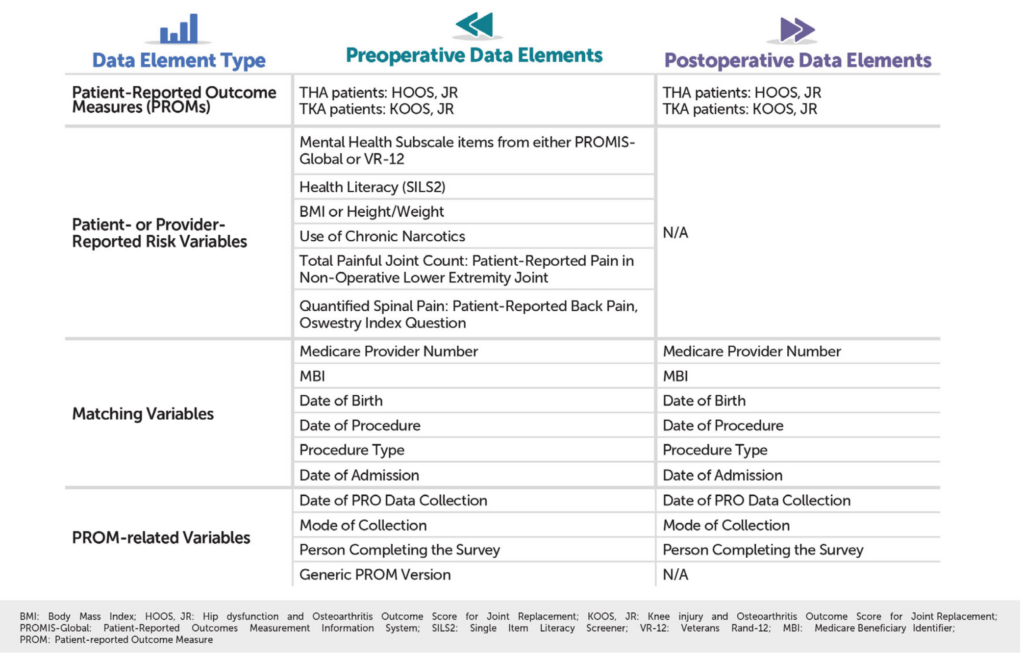Mandatory CMS Inpatient THA/TKA PRO-PM Frequently Asked Questions
The goal of this measure is to quantify pain and functional improvements with validated patient-reported outcome measures (PROMs) to improve patient lives.
What is the financial penalty for not reporting a complete data set for 50% of all eligible patients?
CMS will reduce 25% of the Annual Payment Update (usually 2-4%) for ALL the hospital’s Medicare Fee-for-Service Part A claims, including non-orthopaedic claims. Additionally, the hospital will be disqualified from participation in all Medicare value-based purchasing programs.

How will hospitals be scored?
CMS will publicly report the percentage of patients who achieve a substantial clinical benefit (SCB).
CMS will factor in all the risk variable data you submitted, as well as your claims data, to create your final “risk- standardized improvement rate” (RSIR). If, for example, you achieve a 60% RSIR, that means that, in general, 60% of your patients reported a substantial improvement after their THA/TKA procedure.
When do I need to start collecting baseline data and PROMs?
Preoperative data needs to be captured for procedures performed beginning July 1, 2024. Outcomes will be publicly reported by CMS in 2027.
Who is included?
• Age 65 and older
• Enrolled in Medicare fee-for-service
• Primary elective THA/TKA reimbursed as INPATIENT
*Exclusions
Revisions/Removals/Mechanical
Complications
Partial/Hemi/Uni-compartmental
Musculoskeletal Malignancy
Medicare Advantage Patients
Fractures
What data are required?
Every question in the list below needs to be completed for a minimum of 50% of eligible patients.
Pre-op Patient- or Provider-Reported Risk Variable
At the moment, what is your back pain?
• 0 = None, 1 = Very Mild, 2 = Moderate, 3 = Fairly Severe, 4 = Very Severe, 5 = Worst Imaginable
How comfortable are you filling out medical forms by yourself? (Single Item Literary Screening (SILS)-2)
• 0 = Not at All, 1 = A Little Bit, 2 = Somewhat, 3 = Quite a Bit, 4 = Extremely
What amount of pain have you experienced in the last week in your other knee/hip?
• 0 = None, 1 = Mild, 2 = Moderate, 3 = Severe, 4 = Extreme
Pre- and Post-Operative Functional Status Assessments
When should data be collected?
How should data be captured and submitted?
These CMS Resources provide more information on the data elements required and submission process.
How HUB Healthcare Can Help
HUB Healthcare offers a robust solution designed to streamline communication in healthcare, enhance care coordination, and improve overall workflow efficiency. The platform includes features such as medical case management software, healthcare document management, and healthcare analytics, which optimize all aspects of patient care. Leveraging HUB Healthcare’s tools helps organizations reduce workflow bottlenecks, automate repetitive tasks, and facilitate better collaboration among healthcare providers. This not only improves work quality but also enhances patient outcomes, making HUB Healthcare an essential partner in achieving healthcare excellence.





